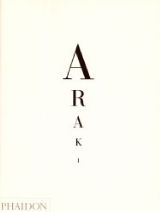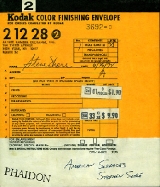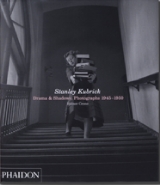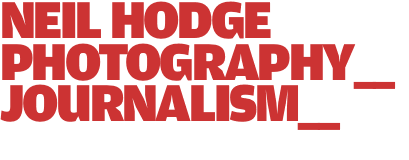Site created by Amplitude. |
||
Self, Life, Death review
Self, Life, Death: Nobuyoshi Araki – Phaidon, £39.95
American Surfaces: Photographs by Stephen Shore – Phaidon, £35.00
Stanley Kubrick: Drama and Shadows – Phaidon, £39.95
Nobuyoshi Araki is arguably Japan’s greatest living, prolific and most controversial photographer with over 300 books published over the past four decades. Yet despite this sheer volume of work, Araki is inextricably-linked to the erotica that made his name – and infamy.
Doing for photography what Henry Miller did for literature, public and critical attention has largely focused on his explicit nude portraits, fascination with live sex shows, choreographed sexual fantasies, and other “taboo” meditations on sex. This is not without reason, and there will likely remain a question mark over whether his photographs are exploitative and demean women for years to come.
But like dismissing Miller as simply a writer of “dirty books”, categorising Araki as a photographer of just erotica excludes too much of his work and skill. Phaidon’s latest 720-page volume of photographs spanning the past 40-years of Araki’s career called Self. Life. Death. (which coincides with a major exhibition of over 4,000 images running at the Barbican) aims to redress the balance.
The book begins with Araki’s street photography of children in Satchin, Japan, followed by his acclaimed and touchingly intimate Sentimental Journey published in 1971 which charts his honeymoon with his late wife Yoko. These photographs are all the more poignant as Araki’s Winter Journey follows Yoko’s illness, death, funeral, and the horrible, barren spaces in their home as Araki and the family cat get used to living on their own. As Araki writes: “To observe life as well as death embraced in life. Or life embraced in death. That is the act of photography.”
While Phaidon’s latest collection succeeds in showing us other facets of Araki’s work, such as his work in colour, his skill with composition and portraiture, and his ability to convey the emotional loss he suffers through the death of his wife, it remains difficult to separate his obvious talent from the titillation and shock value that his more famous work still manages to evoke. Despite this, the book is a thoughtful reappraisal of the maverick photographer and his work.
Stephen Shore is regarded as one of the US’ greatest photographers and a pioneer of colour photography. His photographs of day-to-day life in the US have been exhibited widely worldwide and have influenced many renowned contemporary photographers such as Martin Parr and Nan Goldin.
A precocious talent, Shore took his first photographs as a child and by the age of 14 three of his photographs were acquired by the Museum of Modern Art in New York. As a teenager he spent time in Andy Warhol’s Factory photographing the artist and his entourage. In 1971 Shore became the first living photographer to have a one-person show at the Metropolitan Museum of Art.
American Surfaces is his most famous body of work. The series of 300 colour pictures, arranged in chronological order, forms an obsessive photo-diary of Shore’s experience travelling across Middle America in the early 1970s.
Shore left New York in 1972 and set out with a friend to Amarillo, Texas. Shore was taken aback by the fact that his experience of life as a New Yorker had very little in common with the character and aspirations of Middle America. Later that year he set out again, this time on his own with a Rollei 35 – a point-and-shoot camera – to explore the country through the eyes of an everyday tourist.
The project was entitled American Surfaces – referring to the superficial nature of his brief encounters with places and people and the underlying character of the images that he hoped to produce. With such an easy-to-use camera, he photographed relentlessly. “In American Surfaces, I was photographing almost every meal I ate, every person I met, every waiter or waitress who served me, every bed I slept in, every toilet I peed in. But also, I was photographing streets I was driving through, buildings I would see.”
Shore returned to New York triumphant with hundreds of rolls of film spilling from his bags. In order to remain faithful to the conceptual foundations of the project, he followed the lead of most tourists of the time and sent his film to be developed and printed in Kodak’s labs in New Jersey. The result was hundreds and hundreds of exquisitely composed colour pictures, whose subject became the benchmark for documenting our fast-living, consumer-orientated world. In the spirit of Shore’s original project, Phaidon’s book is packaged in a Kodak-style envelope, reflecting the way the original pictures were delivered.
It is easy to underestimate the influence that Shore has had on contemporary photography and photojournalism. To a casual observer, Shore merely took pictures indiscriminately of everything he saw. But Shore’s work is important for two reasons: his work challenged the idea that photography and photojournalism was dependent on black and white film, and that everyday objects could tell as much about a situation, a place, or a person as a portrait could. For those who like the work of Nan Goldin and Martin Parr, this book is a fine companion piece.
Stanley Kubrick: Drama and Shadows, also published by Phaidon, is a real revelation. It is a 250-page collection of the renowned filmmaker’s photographs taken between 1945 and 1950 while he was a staff photographer for the New York–based Look magazine.
Born in New York City in 1928, Kubrick began taking photographs when he was in high school. At sixteen, he sent a photograph he had taken of a newsstand after President Roosevelt’s death to Look Magazine. The publication of the photograph marked the beginning of Kubrick’s work for the magazine, which lasted until 1950, when he made his first 16mm documentary film. During those five years Kubrick completed dozens of photographic reportage assignments in New York City, as well as abroad. The resulting thousands of negatives have remained in the archives of Look Magazine ever since.
Divided into four thematic chapters (Metropolitan Life, Entertainment, Celebrities, and Human Behaviour), this photobook features a carefully selected group of approximately 350 photographs organised into 37 photographic stories.
Kubrick’s photographs vary greatly in subject, but people are the central focus of attention. Whether capturing the meditative state of passengers in a series of candid portraits made in the New York subway, following the boxer Rocky Graziano on the ring and in intimate moments, portraying the coming of age of socialite Betsy Von Fürstenberg, or narrating the tale of a shoe-shine boy in the streets of New York City, Kubrick’s photographs combine the gentle wit of Elliott Erwitt, the compositional skill of Cartier-Bresson, and the dedication to subject of Eugene Smith. The book works as both an insight into the mind of a great film director before he even held a movie camera, and also as a standalone body of work of impeccably produced photographs.
“Like dismissing Henry Miller as simply a writer of ‘dirty books’, categorising Araki as a photographer of just erotica excludes too much of his work and skill”



"Shore’s work is important for two reasons: his work challenged the idea that photography and photojournalism was dependent on black and white film, and that everyday objects could tell as much about a situation, a place, or a person as a portrait could"
